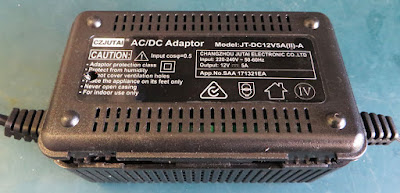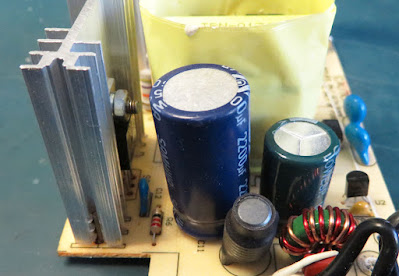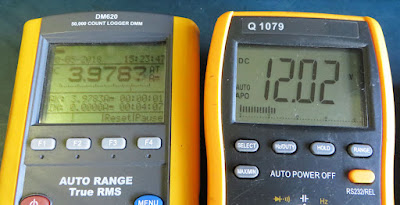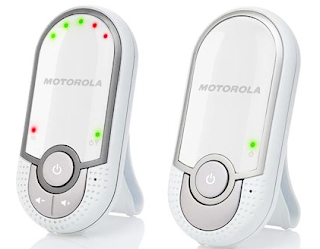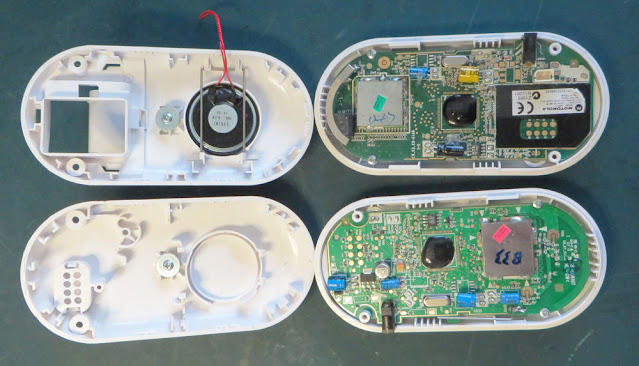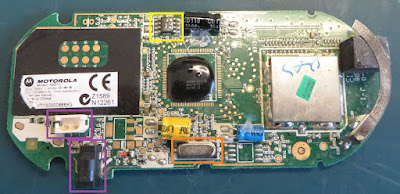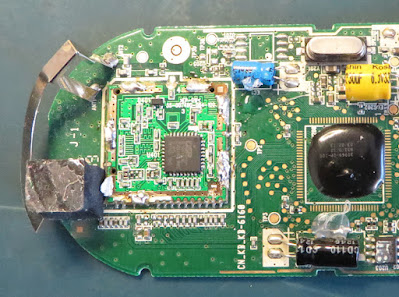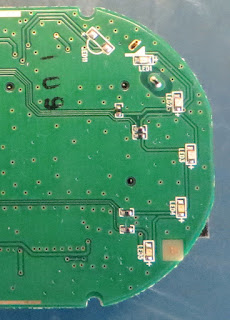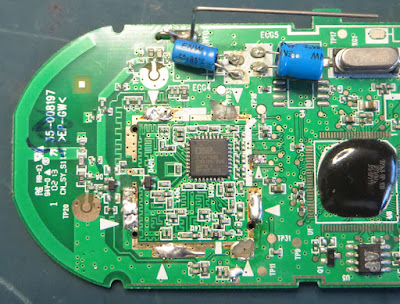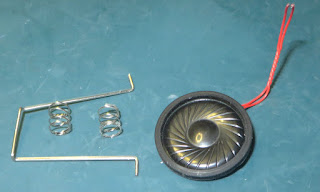Summary
This blog details the salvaging process of hardware from a Swann DVR, model SWDVR-81500H and an associated dome camera.
 |
Swann DVR
|
DVR
The Swann DVR unit was factory supplied with an external power supply and several dome cameras. This unit in this post was a superseded model.
 |
Swann DVR Rear Plate
|
On the backplate of the DVR were inputs for the dome video cameras, audio inputs, video out, power, LAN and USB connections.
 |
Swann DVR Internals
|
To open the DVR unit, four plastic screws in the base were removed. Upon sliding the metal plate away from the ABS case, the controller card and hard drive were visible.The white ABS case was relatively sturdy and could be repurposed for another custom project. Similarly, the metal frame could be repurposed.
Hardware
The hard drive was held on with an additional four screws and easily removed. Manufactured by Western Digital, for this model DVR a 500 GB HDD was fitted. The drive could be reused; reformatting and standard SMART hard drive tests would be recommended.
 |
Short Hard Drive Cables
|
The hard drives short serial ATA cable and power could be salvaged for another Single Board Computer (SBC) project.
To remove the controller board the screws in the metal base and backplate were removed.
Controller Card Components
Depending on the requirements of the salvager, most of the connectors from the controller board could be repurposed. The BNC connectors were sturdy and come with the right angle PCB mounting brackets. Most of the connectors were unbranded so cross-referencing against standard PCB footprints would be recommended for consistency and availability.
 |
| DVR Controller Board |
Other parts such as the Piezo buzzer and CR1220 surface mount battery holder (yellow box in the above image) are readily salvaged.
Some of the electrolytic capacitors close to the DC input power jack were showing early signs failure with bulging at the top of the can.The crystals, inductors, processor heatsink and LED's can readily be removed for salvage.
The controller was manufactured by HIKVision and the associated DDR3 memory (128M x 16) was from Samsung, part K4B2G1646F-BCK0 (blue box).
 |
Processor Heatsink
|
The
controller was manufactured by HIKVision and the associated DDR3 memory
(128M x 16) was from Samsung, part K4B2G1646F-BCK0 (blue box). |
HIKVision Processor Cover
|
These parts were not worth removing unless required to repair another unit or similar DVR; the usual removal method would be via a hot air tool.
For the video decoding, an Intersil (Renesas) TW2968 8-channel video/audio decoder (orange box) was used by the DVR, likely not useable.
Ethernet communications utilised the Realtek 10/100 PHY, RTL8201F (purple box). Similar part here. The Ethernet chip supports the standard communications modes except RGMII. Could be salvaged using the correct tools however Gigabit devices are more common.
For timekeeping, an NXP RTC PCF8563 on the rear of the board was used. The RTC has a standard SOIC footprint which is worth salvaging with the battery holder (yellow box ) for a project requiring an RTC.
Lastly, the DC 12 V 2 A plug packs powering the DVR were in reasonable condition, with a larger style DC jack; worth keeping as spares.
Camera Hardware
The associated DVR dome camera presented as a sealed unit. The body of the camera was produced from diecast aluminium.
 |
| Dome Camera |
After removing the dome camera from the plastic roof mount, three screws were visible on the rear of the camera. Removing the screws on the rear allowed the cover containing the glass window to be taken off.
 |
Dome Camera Opened
|
Looking at the internals of the camera, the LED ring is immediately visible. Removing the two retaining screws and the connecting cable allowed the LED ring to be removed.
 |
Dome Camera LED Ring
|
The twenty-four IR LED’s fitted to the PCB could be salvaged. However, the board is a self-contained circuit, with a light sensor and LED driver which may suit a project requiring IR illumination without modifications.
 |
Dome Camera LED Ring Rear
|
Holding the camera board to the diecast aluminium base were M2.5 bolts and M2.5 x 13.5 mm Hex metal spacers. The two halves of the dome camera could be repurposed for another camera project.
 |
Dome Camera Board
|
The camera board contained a day-night switch which was achieved using a mechanical assembly.
 |
Camera Day-Night and Lens Assembly
|
This assembly also contained the camera lens. Driving the day-night switch solenoid was a Unisonic reversible motor driver BA6208.
 |
Camera Board Front
|
Removing the camera chip would be possible, however desoldering all four sides of the device usually requires dedicated equipment or patience.
 |
Camera Board Rear
|
Interfacing to the camera chip and controlling the solenoid for day-night operation was an ST microcontroller, part STM8S003F3P6. With 8k of FLASH memory and a small amount of EEPROM, this could also be salvaged.
The switch-mode power supply manufacturer was not identifiable.
The remaining parts such as the 27 MHz crystal, inductor and surface mount connectors (reasonable quality) could also be salvaged.
Other items such as the BNC adaptors and interconnecting cables between the DVR and dome cameras were not worth salvaging.






